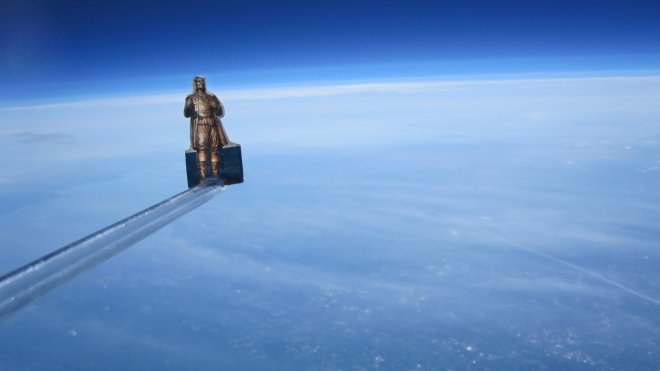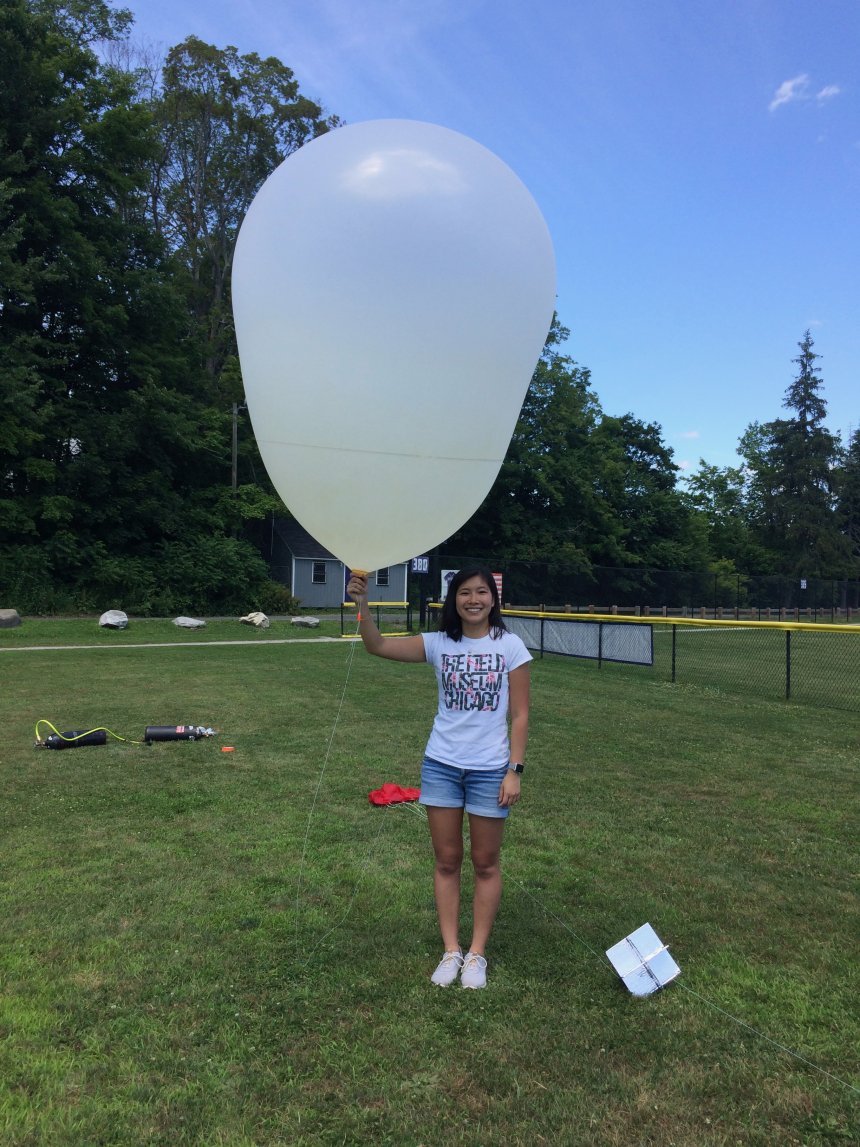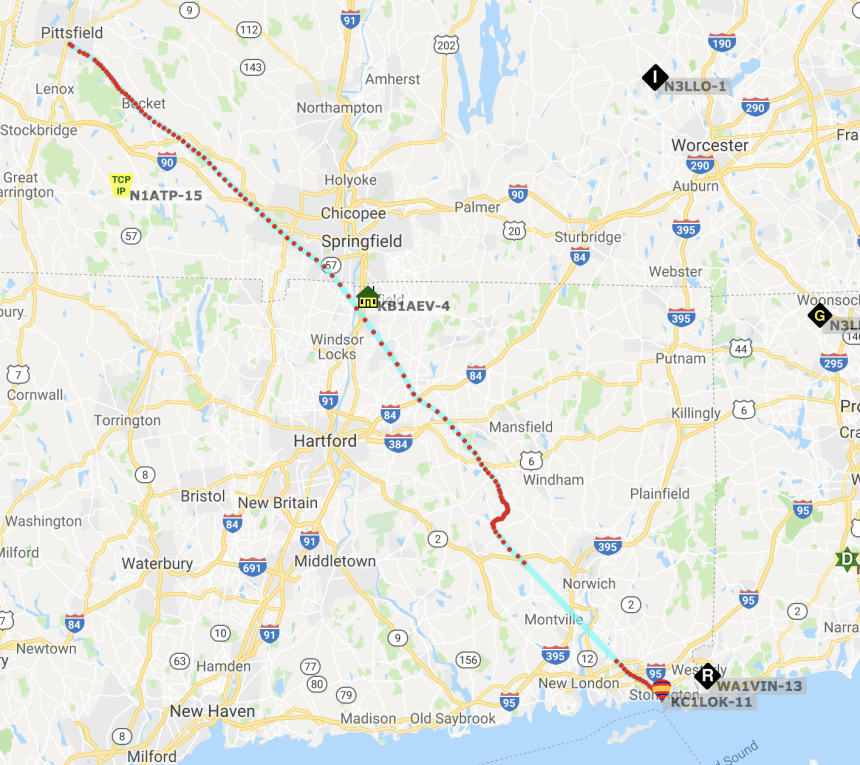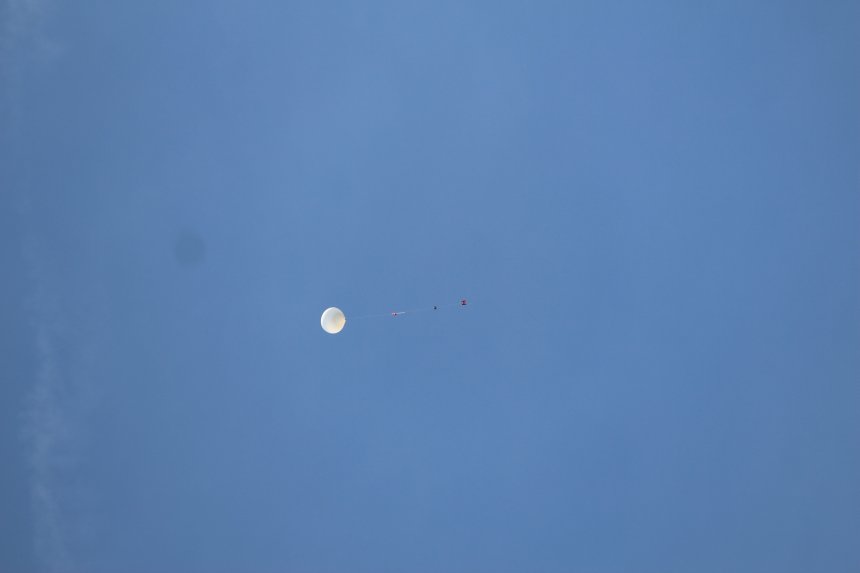RWU Senior Launches HawkEye 1 Balloon with 71,000 Foot Altitude
As part of an Honors Capstone project, senior Jenna Lowe developed and launched a high-altitude balloon, which reached 71,000 feet before bursting and returning to land.

BRISTOL, R.I. – It’s a bird! It’s a plane! It’s a high-altitude balloon! Jenna Lowe, a senior biology and environmental science major and physics minor, launched a high altitude balloon this summer as part of her Honors Capstone project.
The balloon was launched Monday, July 15th from Pittsfield, MA around 2 p.m. and it landed in Stonington, CT around 5 p.m (upside down in the bay). Jenna attached a GPS unit on it and tracked the balloon by radio the whole way and retrieved it from the bay. The mini Roger statue, camera memory card, and some of their sensor data survived the high-altitude of 71,000 feet.
Since her freshman year at Roger Williams University, Lowe sought potential research projects and was quickly influenced by Associate Professor of Physics, Adria Updike’s course.
Updike’s Honors Capstone course offers students the opportunity to think critically, complete independent interdisciplinary research, and apply civic engagement.
In addition to the high-altitude balloon, Jenna’s project also included a website with detailed instructions and lessons learned as a result of her first launch. The website will be a resource for future classes that are interested in launching their own missions.
Lowe shared the process of her Honors Capstone project, her plans for the future and how undergrad research will her help her reach those goals in the future.
What made you decide to do a high-altitude balloon launch for your Honors Capstone project?
I knew that I wanted to do research that includes both my majors and minor. I was particularly interested in Professor Updike’s research studies Spring of my freshman year. She works with electrical sensors to conduct research. She gave me lots of materials and books to borrow. Professor Updike suggested the high-altitude balloon project, and I thought it was a great idea so I began conducting and researching.
Can you share with us the specific research that went into preparing for the launch? How long did it take?
It was a very hands-on independent research project. I built all the components which included electronics like the radar reflector, antennae, payload design, and a website publisher to track the launch. I did a lot of research on what other students have done for this project as well. I also had to prepare for launch day by looking at different weather prediction sites. We used Professor Updike’s old Canon so it would be focused on infinity and it would take a photo every 10 secs. The display was off so it wouldn’t take up extra battery, and the sensor was measuring temperature, humidity, and infrared light. We also had to choose a location that was flat with not a lot of trees in a public space.
Did you set any goals for this project? If so, how did the results compare?
I had to predict where it would land, and wasn’t expecting it to land near water, but somehow it overshot. It landed in the water and stayed there for about three hours before we were able to retrieve it. We tried to waterproof everything as much as possible, but some of the sensors needed to be exposed to the air so when it hit the water they eroded. On a positive note, we were able to retrieve the SD cards, dry them out, and collect all the data.
Was there anything that surprised you during the process, and what did you learn?
The size of the scale surprised me because I had to take on all the research. Professor Updike taught me how to connect different components and program and code the sensors. It was my first time learning all of that in preparation for this project so it was all new and surprising.
Why did you choose to launch Roger?
I wanted to represent Roger Williams University. I was inspired by our study abroad folks who travel with Roger and take photos. I thought it would be cool to have Roger’s greatest adventure in the sky.
What advice would you give to other students launching their own missions in the future?
Do a lot of research beforehand. The website that I’m building has a lot of things to consider, and all the different codes so students can adapt it or make the project exactly the same.
What are your plans after graduation, and how do you think this research as an undergrad will help you in the future?
I plan to study terrestrial mammals in grad school. I would like to do field research, and I think this information that I learned about electronics and sensors will definitely help me in the future to gather data on those animals. I’ve been a part of a lot of research projects during my time at RWU and I’ve gotten close to all my professors. When I speak to grad school professors and employers, most of them say the most valuable skill is conducting research and being able to talk about it in depth. I’m gaining that experience as an undergrad student which is a great head start.




